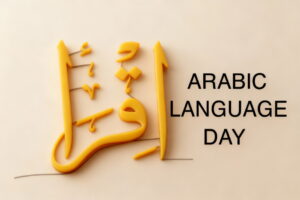
Classical Arabic vs Modern Arabic: What You Need to Know?
Welcome to the linguistic journey comparing the timeless elegance of Classical Arabic with the pragmatic dynamism of Modern Standard Arabic (MSA).
This exploration aims to unravel the intricate differences between these variations, offering insights into their historical significance, structural nuances, and terminological disparities. Join us as we navigate through the realms of tradition and modernity within the Arabic language, understanding how each variation shapes cultural heritage and contemporary communication.
Table of Contents
ToggleClassical Arabic vs Modern Arabic
Classical Arabic:
- Historical Significance: Classical Arabic is the language of the Qur’an and ancient literature, revered for its eloquence and purity.
- Usage: It’s primarily used in religious contexts, formal literature, poetry, and historical texts.
- Complexity: Known for its intricate grammar, syntax, and vocabulary, which can pose challenges for modern learners.
- Uniformity: Remains relatively standardized and unchanged over centuries, maintaining its traditional essence.
Modern Arabic:
- Evolution: Modern Arabic has evolved into various regional dialects influenced by historical interactions and social dynamics.
- Daily Usage: Widely used in everyday communication, media, and contemporary literature across different Arabic-speaking countries.
- Simplified Grammar: Compared to Classical Arabic, modern variations often have simplified grammar and more colloquial expressions.
- Diversity: Contains diverse dialects across regions, leading to differences in vocabulary, pronunciation, and even grammar rules.
Comparison:
- Accessibility: While Classical Arabic is rooted in tradition and sacred texts, Modern Arabic offers practicality in daily interactions and modern communication.
- Understanding: Many native speakers understand Classical Arabic due to its religious significance, but not everyone speaks it fluently.
- Learning Challenges: Foreign learners often begin with Modern Standard Arabic (a standardized form of Modern Arabic) before transitioning to dialects or Classical Arabic.
- Cultural Context: Mastery of Classical Arabic grants deeper insights into historical and religious texts, while understanding modern variations fosters integration into contemporary Arabic-speaking societies.
In essence, while Classical Arabic preserves cultural heritage and religious significance, Modern Arabic serves as a bridge for everyday communication and understanding among diverse Arabic-speaking communities. Recognizing the differences between these variations enables a deeper appreciation of the language’s evolution and its multifaceted nature.
Differences Between Arabic Programs in Syntax
Verb Placement:
In Classical Arabic, the verb often appears at the beginning of the sentence, emphasizing its importance. For example, “ذَهَبَ الطَّالِبُ إِلَى المَدْرَسَةِ” (thahaba at-taalibu ila al-madrasah) meaning “The student went to the school.”
MSA typically follows a Subject-Verb-Object (SVO) word order, similar to many modern languages. For example, “الطَّالِبُ ذَهَبَ إِلَى المَدْرَسَةِ” (At-taalibu thahaba ila al-madrasah) meaning “The student went to the school.”
Use of Pronouns:
In MSA, pronouns are typically separate words rather than integrated into the verb, such as “أَنَا ذَهَبْتُ” (Ana thahabtu) meaning “I went” or “هُوَ كَتَبَ” (Huwa kataba) meaning “He wrote.”
Pronouns in Classical Arabic often appear within the verb itself due to conjugation, such as “ذَهَبْتُ” (thahabtu) meaning “I went” or “كَتَبْتُ” (katabtu) meaning “I wrote.”
Structure:
MSA often maintains a consistent word order (Subject-Verb-Object) for easier comprehension and learning. It relies less on case endings and diacritical marks compared to Classical Arabic.
Arabic in real life showcases its flexibility through Classical Arabic, as it tends to favor a more flexible word order. The presence of case endings and diacritical marks aids in determining the function of words within a sentence, granting the language the freedom to arrange words while upholding grammatical correctness.
Understanding these syntactic differences can aid learners in distinguishing between the structures and patterns used in Classical Arabic, often found in religious and historical texts, and the more standardized syntax of Modern Standard Arabic used in contemporary communication.
Differences Between Arabic MSA and Classical in Terminology
The differences between Modern Standard Arabic (MSA) and Classical Arabic in terminology encompass several aspects:
Classical Arabic Terminology:
- Archaisms and Classical Vocabulary: Classical Arabic includes archaic terms and vocabulary that might not be prevalent in Modern Standard Arabic. Many classical terms are specific to ancient poetry, literature, and religious texts like the Qur’an and Hadith.
- Technical and Scholarly Vocabulary: Classical Arabic has a rich lexicon of terms associated with scholarly disciplines such as theology, philosophy, and ancient sciences. These specialized terms often differ from their modern counterparts.
- Cultural Context: Certain terms and expressions in Classical Arabic relate to customs, traditions, and societal structures prevalent in ancient times. Understanding these terms requires familiarity with historical and cultural contexts.
Modern Standard Arabic (MSA) Terminology:
- Contemporary Vocabulary: MSA incorporates a range of modern words and expressions that have evolved to adapt to contemporary life, technology, and societal changes.
- Standardized and Simplified Terms: MSA often simplifies and standardizes terminology, making it more accessible for communication in various fields such as media, education, and formal writing.
- Adaptation of Loanwords: MSA incorporates loanwords from other languages, especially in fields like technology, science, and commerce. These loanwords often reflect global influences and advancements.
Key Differences Summary:
- Historical vs. Contemporary Relevance: Classical Arabic terminology often holds historical and religious significance, while MSA terminology caters to modern contexts and evolving societal needs.
- Specialized vs. Generalized Vocabulary: Classical Arabic has specialized vocabulary pertinent to ancient knowledge and religious texts, whereas MSA focuses on a more generalized vocabulary applicable to modern communication.
Navigating these differences in terminology is essential for individuals engaging with Classical Arabic texts for historical, religious, or literary purposes, as well as those seeking proficiency in Modern Standard Arabic for everyday communication and contemporary contexts.
Conclusion
As we conclude this exploration into Classical Arabic and Modern Standard Arabic, we’ve uncovered the rich tapestry of history, complexity, and evolution that define these linguistic variations.
From the sacred eloquence of Classical Arabic, rooted in tradition and revered literature, to the practical adaptability of Modern Standard Arabic, bridging cultural boundaries in contemporary contexts, the differences illuminate the multifaceted nature of the Arabic language.
Embracing these distinctions empowers us to appreciate the language’s heritage while navigating its relevance in today’s globalized world, fostering a deeper understanding of Arabic culture, communication, and diversity.
If you’re looking for the best programs to learn Arabic, get in touch with us today!



